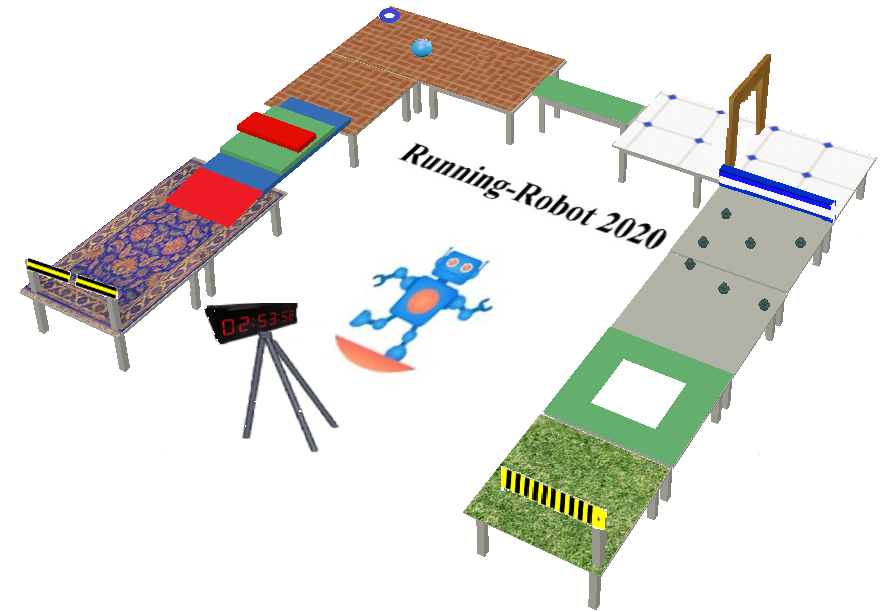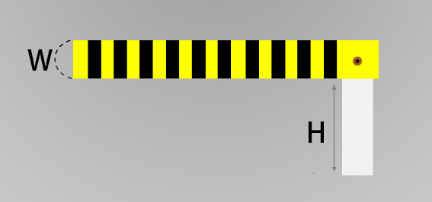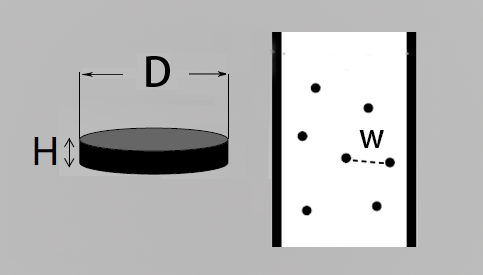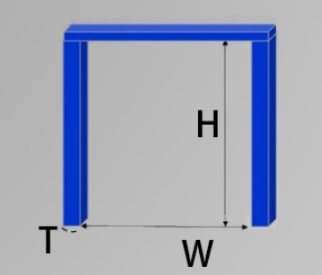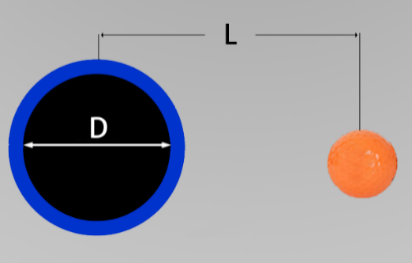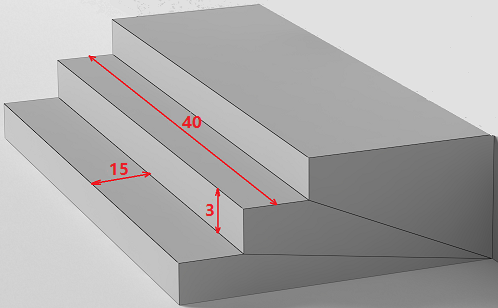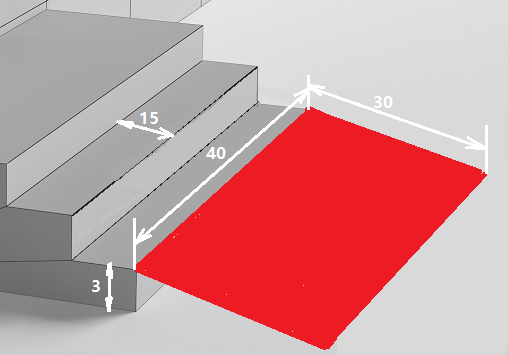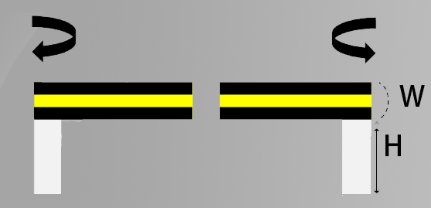2020 International Annual Autonomous Intelligent Robot Competition
Running-Robot 2020

Standard competition - rules and arrangements
V1.1
Table of Contents
Chapter 1: Rules of the Competition --------------------------------------4
1. Teams and robots --------------------------------------4
2. Game scenarios and tasks --------------------------------------4
3. The division of the competition and the calculation of the final result -------------------------------------- 5
4. End conditions of each round of competition and calculation of score -------------------------------------- 5
Chapter 2: Competition arrangement --------------------------------------7
1. Order of competition --------------------------------------7
2. Pre-competition preparation --------------------------------------7
3. Enter the competition --------------------------------------7
4. In the competition --------------------------------------8
5. End of game --------------------------------------8
6. Other instructions --------------------------------------8
Appendix - 2020 Competition Scenario --------------------------------------10
1. Overview of the competition scene --------------------------------------10
2. Tasks and scores --------------------------------------12
2.1 Upper and lower cross bars-------------------------------------- 12
2.2 Minefields --------------------------------------12
2.3 Cross baffle section --------------------------------------13
2.4 Passing road --------------------------------------14
2.5 Cross section of bridge --------------------------------------14
2.6 Kicking into the hole --------------------------------------15
2.7 Upstairs section --------------------------------------15
2.8 Down stairs and down slopes --------------------------------------16
2.9 Cross section --------------------------------------17
2.10 Over horizontal cross bar --------------------------------------17
Modification instructions --------------------------------------19
Chapter 1: Rules of the Competition
1. Teams and robots
Those who are willing to participate in the standard competition shall organize their own teams to apply to the organizing committee of the competition. There will be no more than 5 persons per team.
The robot participating in the standard competition must be a robot that can independently and intelligently (i.e. take action without human intervention) complete upright walking and other action tasks in a complex environment, according to specific circumstances. "Robot walking upright" refers to the way in which the robot simulates human beings to walk on the track with sole of foot (without other parts) touching the ground and supporting the whole body.
The robot hardware (and development board) designated by the organizing committee of the competition must be used in the standard competition.
2. Game scenarios and tasks
The competition scene is a simplified and simulated human activity scene like starting from the start point and completing multiple tasks on the way according to the situation until reaching the final destination.
The robot is required to complete all tasks quickly in the competition time. For the description of the game scene and task, see the attachment below.
3. The division of the competition and the calculation of the final result
l There will be 2 rounds for each team
l 8 minutes are designated for each team in each round
l Start the second round after all teams finished in the first round
l The best of two scores of each team will be considered as the final score
4. End conditions of each round of competition and calculation of score
In a match, the round ends when one of the following conditions is met:
l In the game, when the robot reaches the end. "Robot reaching the end point" refers to the robot's sole fully stepping into or exceeding the end point line
l In the competition, when the team touches the robot
l In a race, if the robot leaves the track
l When game time arrives
At the end of a round, the completed tasks are called "completed tasks".
The score and ranking of each round of competition are calculated according to the two dimensions of primary and secondary.
l Main dimension: in the competition, the participating robots score for completing each task (high score means that the task is difficult); those with higher total score (i.e. more difficult and more tasks) wins.
l Sub dimension: the time from the beginning to the end of the competition robot is the total completion time; among all the robots with the same total score, the one with less total completion time (i.e. faster) wins.
Chapter 2: Competition arrangement
1. Order of competition
Before entering the competition field, the team members shall draw lots to determine the order of the competition.
2. Pre-competition preparation
a) Each team, according to their own schedule, enters the preparation area in advance before the start of the competition, completes the robot debugging, confirms the only (robot) "operator" and other preparations, and reports "ready" to the referee
b) After receiving the "ready" report, the referee will check the team and the robot to confirm that the team is "ready". If the requirements are not met, the referee has the right to require the team to prepare again
c) 10 minutes before the start of the match, if the "ready" cannot be confirmed by the referee, the player will withdraw from the match
3. Enter the competition
a) "Ready" teams, with robots, enter the competition area. The operator places the robot at the starting point and signals that the referee is ready
b) The referee declared "the start of the game" and started the timing device at the same time. The operator will not be able to start the robot until the game is announced. If the operator starts the robot first, he will be warned by the referee; if he starts again, he will be disqualified
1. In the competition
a) From the beginning to the end of the competition, only the operator can enter the field and operate the robot according to the regulations. In the game, no one else can operate the robot in any way. In case of violation, you will be disqualified
b) It is the operator's responsibility to ensure that all of his operations comply with the rules of the game. If any operation does not conform to the competition rules, it will be disqualified
1. End of game
a) The referee declared "the end of the game" according to the rules and stopped the timing device. At this time, the timing device displays the total completion time.
b) After the competition, the referee is responsible for calculating the score and filling in the report card according to the rules. The team confirms their own report card and leaves with their own robot
1. Other instructions
a) If there are any changes to the rules of the competition, the organizing committee will inform all teams in the first time
b) In a match, the referee has the power to decide. If you have any objection, please submit it to the referee
c) The organizing committee is responsible for final determination of all objections and settlement of all disputes
Appendix - 2020 Competition Scenario
1. Overview of the competition scene
Venue area: 5x5 m.
The track is located in the center of the field and is roughly U-shaped. The narrowest part of the track is 20 cm, and the widest part is no more than 60 cm, which is at least 15 cm higher than the surrounding ground. "Robot leaving the track" means that the robot falls to the ground outside the track.
The main body of the track is the melamine board with pitted surface and the surface color is gray. In order to get close to the actual working environment of the robot, part of the track surface is coated with spray painting film and the spray painting pattern does not use 3D pictures. However, it only uses 2D pictures to represent the grass, tile, wood floor, and other patterns; some of the track will be covered with carpet or rubber mat. There is a ring of fence advertising around the track, the fence is about 50 cm away from the track boundary, with LOGO on it; there is ground advertising on the center site of the track.
The static friction coefficient of the robot foot is about 0.1 (each team can stick anti-skid materials on the robot foot as needed).
The track has multiple mission sections. Each task section has its own starting line and terminal line; the starting line of the first task section is the starting line of the track. The finish line of each task is the starting line of subsequent tasks; the finish line of the last task is the end line of the track. "Put the robot at the starting point" means that the robot foot is close to starting line but does not touch or exceed the starting line.
The start and end lines of tasks are set for placing robots and measuring achievements. Robots do not need to recognize these two kinds of marking lines.
Figure 1 is a three-dimensional schematic diagram of the venue. In a real game, the order in which tasks appear, and the colors of roads and other objects in each task, may be different from those shown in the figure 1.
|
Figure 1: Track structure |
2. Tasks and scores
2.1 Upper and lower cross bars
Road conditions: drive up and down (90 degrees) crossbars across the track, keep 5 seconds for each cycle in the down state and 10 seconds for each cycle in the up state. The movement time of raising or lowering the crossbar is less than 3 seconds.
The width of the crossbar (W) is 7 cm, and the height from the ground to the bottom of the crossbar (H) is 20 cm. There are yellow and black marking lines on the crossbar. See Figure 2.
|
Figure 2: Upper and lower cross bars |
Requirements and scores:
l Walking upright through the crossbar without touching the crossbar; 10 points
l Walking upright and passing the crossbar, but touching the crossbar; 5 points
l Passing or crossing the cross bar in other forms; 0 point
2.2 Minefields
Pavement condition: randomly place 7 cylindrical, black mines on the pavement; the center distance between the two centers (W) ≥ 30 cm. The diameter (D) of the mine is 2 cm and the height (H) is 5 cm. See Figure 3.
|
Figure 3: Minefields |
Requirements and scores:
l Walk upright and pass without touching the mine; 20 points
l Walk upright to pass and touch the mine once; 10 points
l Pass in other forms; 0 point
2.3 Cross baffle section
Road conditions: baffle across the track, height (H) 10 cm, thickness (T) 4 cm. A marking line is pasted on the baffle plate. See Figure 4.
|
Figure 4: Cross baffle section |
Requirements and scores:
l If you step over the baffle, the posture is unlimited and the baffle does not fall to the ground, 20 points will be obtained. When crossing, it is allowed to move or touch the baffle, and no points will be deducted
l Make the baffle fall to the ground when passing; 0 point
2.4 Passing road
Road condition: door height (H) 62 cm, width (W) 30 cm, door frame width (T) 3 cm. There is a blue marking line on the door. The distance between the door frame and the edge of the track is random. See Figure 5.
|
Figure 5: Passing road |
Requirements and scores:
l Walk straight through the middle of the door without touching the door; 10 points
l Walk straight through the middle of the door and touch the door; 5 points
l Pass by other means; 0 point
2.5 Cross section of bridge
Pavement condition: straight bridge, length (H) 60 cm, width 20 cm, as shown in Figure 6.
|
Figure 6: Cross section of bridge |
Requirements and scores:
l Walk straight through; 20 points
l Passing other methods; 0 point
2.6 Kicking into the hole
Road condition: there is a golf ball on the road. The diameter of the hole (D) is 10 cm, and the edge of the hole is marked with a 1 cm wide identification line. The distance between the hole and the ball (L) is ≤ 50 cm. See Figure 7.
|
Figure 7: Kicking into the hole |
Requirements and scores:
l Passing through the road in any form, but standing up and kicking into the hole (multiple attempts can be made); 20 points
l Passing, but not standing up and kicking into the hole; 0 point
2.7 Upstairs section
Pavement condition: there are three steps, each of which is 3 cm high, 40 cm wide and 15 cm long. See Figure 8.
|
Figure 8: Staircase section |
Requirements and scores:
l Go up the stairs in an upright state; 20 points
l Go upstairs in other forms; 0 point
2.8 Down stairs and down slopes
Pavement condition: there are two steps and one slope. The step size is the same as above. Slope height (H) 3 cm, length (L) 30 cm, width (W) 40 cm. See Figure 9.
|
Figure 9: Slope section |
Requirements and scores:
l Go down the stairs vertically and pass the slope vertically; 20 points
l Go down the stairs in other forms and pass the slope; 0 point
Single color plates of different colors are used for stair and slope sections. See Figure 10 for their stereoscopic drawings.
|
Figure 10: Three dimensional drawing of staircase and slope section |
2.9 Cross section
Road condition: Green Road, width (W) 60 cm, total length 60 cm. There is a square pit in the middle of the road, with length x width (L1 x L2)
of 20 X 20 cm and depth (H) ≥ 15cm. See Figure 11
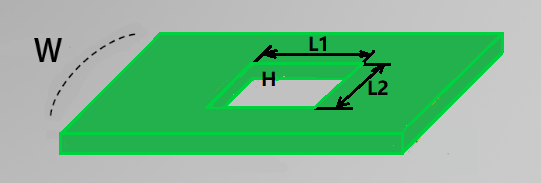
Figure 11: Cross section
Requirements and scores:l For passing through the pit road vertically; 20 points
2.10 Over horizontal cross bar
Road conditions: horizontal cross bar crossing the track divided into two sections, in horizontal direction, 90 degrees to both sides or closed. Each cycle is closed for 5 seconds and opens for 10 seconds. The width of the cross bar (W) is 5 cm, and the height from the road surface to the bottom edge of the cross bar (H) is 20 cm. The crossbar is pasted with yellow and black marking lines. See Figure 12.
|
Figure 12: Over horizontal cross bar |
Requirements and scores:
l Walk upright and pass without touching the crossbar; 10 points
l Walking upright and passing through, touching the crossbar; 5 points
l Pass in other forms; 0 point
Modification instructions
V1.0
First draft: Compared with the 2019 rules, it mainly modifies the track width and relevant parameters; changes the color, pattern and material of the track; increases the tasks of going up, down and down the stairs; does not allow touching the robot during the competition.
V1.1
1. Reformatted file
2. Revised scoring rules for touching mines


